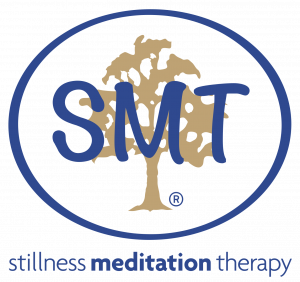Stillness Meditation Therapy – learn it … live it … teach it?
 The rise and rise of the popularity of meditation as a life skill calls for increased numbers of qualified meditation teachers. A wonderful prospect indeed as the widespread recognition of meditation as an enriching and sustaining life-skill has finally arrived!
The rise and rise of the popularity of meditation as a life skill calls for increased numbers of qualified meditation teachers. A wonderful prospect indeed as the widespread recognition of meditation as an enriching and sustaining life-skill has finally arrived!
I find it exciting and a privilege to welcome each year a new intake of enthusiastic candidates eager to train as teachers of Stillness Meditation Therapy – SMT as it’s known today. However, familiar questions arise:
“What do you offer … can I really teach this – and how is Stillness Meditation Therapy different from other methods?”
My primary objective in Teacher Training is to build strong group camaraderie alongside the essentials necessary to produce, over time, the right ‘recipe’ for students’ accreditation.
There are pre-requisites to commencement from which trainees develop a deep understanding of the theory, physiology, psychology and ethos of Stillness Meditation as a therapeutic modality. In training we explore all styles of meditation, respecting the value of each while identifying difference. This understanding involves an appreciation of the importance of natural mental rest as the primary purpose of SMT, as well as learning to let go of any kind of technique that may inadvertently disturb mental rest. Also, within the development of teaching skills comes a growing sensitivity to the paradox of stillness in the face of discomfort and how this affects life in general.
Achieving prolonged mental rest and the benefits to be gained takes time and repetition – something for teachers to be able to impart to their future students. In SMT we are helping people to literally change their mind – and in doing so, our aim is to emphasize the ultimate outcome of living calm. So prospective teachers must themselves be proficient advocates of what they teach.
To cultivate understanding of a range of human needs, within training we share the experience of each other’s unique life. Emotions, individual journeys, ideas, thoughts and feelings come into play. We discuss empathy, trust, example, insight and intuition, encouragement and guidance. We study the skills of non-verbal communication. We work particularly on the skill of calming touch, a unique feature of SMT which, when used correctly, is the essence of the SMT teacher’s role. In training we understand together how resting the mind illuminates consciousness, nurtures mindfulness and leads to a wholly better life. And most importantly, we embrace the intangible, but so very important element of the care of those we teach.
Stillness Meditation (SMT®) is a unique approach based in physiology. This concept was specifically created by psychiatrist Ainslie Meares to assist in health and wellbeing through the natural reduction of anxiety. In short, SMT helps people to flourish by directly accessing ‘the body’s own way of coping with distress.’ Simple … natural … profound.
And so each year I look forward to meeting new candidates within a selection consultation that may lead to broader pathways and potentially, a healthier and happier world. To become an accredited SMT teacher, please see more information on Teacher Training here.
Pauline McKinnon (c)
October 2017, Melbourne



